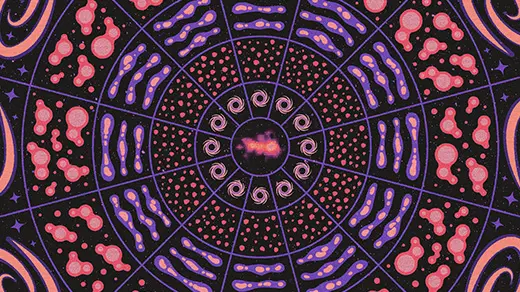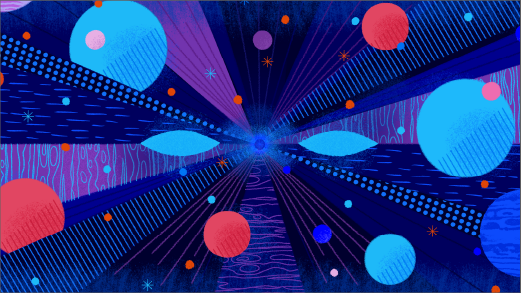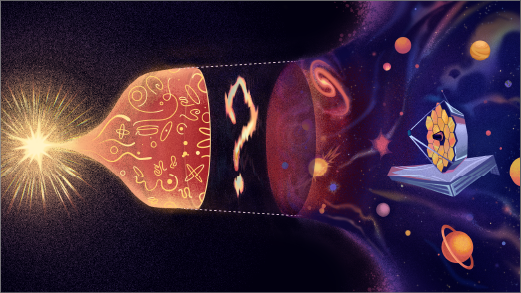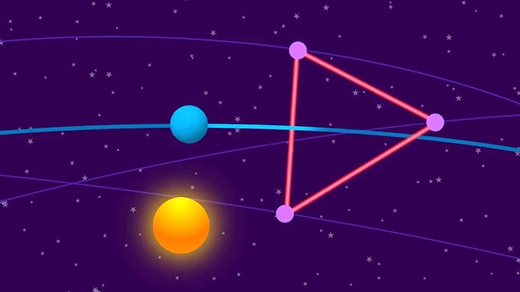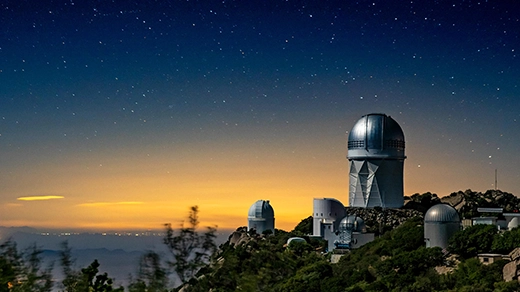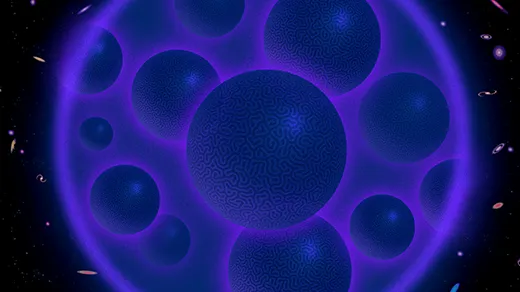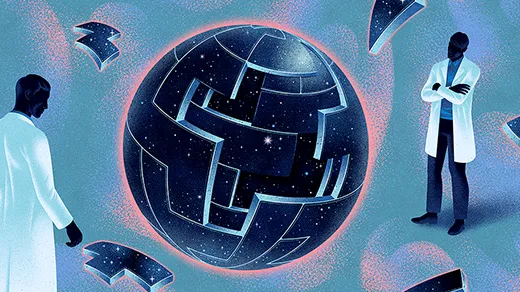What's up in
Cosmology
Latest Articles
The ‘Beautiful Confusion’ of the First Billion Years Comes Into View
Astronomers are reveling in the James Webb Space Telescope’s discoveries about the formative epoch of cosmic history.
Diminishing Dark Energy May Evade the ‘Swampland’ of Impossible Universes
The largest-ever 3D map of the cosmos hints that the dark energy that’s fueling the universe’s expansion may be weakening. One community of theoretical physicists expected as much.
The Webb Telescope Further Deepens the Biggest Controversy in Cosmology
A long-awaited study of the cosmic expansion rate suggests that when it comes to the Hubble tension, cosmologists are still missing something.
Hopes of Big Bang Discoveries Ride on a Future Spacecraft
Physicists and cosmologists will have a new probe of primordial processes when Europe launches the Laser Interferometer Space Antenna (LISA) next decade.
Dark Energy May Be Weakening, Major Astrophysics Study Finds
A generation of physicists has referred to the dark energy that permeates the universe as “the cosmological constant.” Now the largest map of the cosmos to date hints that this mysterious energy has been changing over billions of years.
Fresh X-Rays Reveal a Universe as Clumpy as Cosmology Predicts
By mapping the largest structures in the universe in X-rays, cosmologists have found striking agreement with their standard theoretical model of how the universe evolves.
Radio Maps May Reveal the Universe’s Biggest Magnetic Fields
A controversial technique has produced detailed maps of the magnetic fields in colossal galaxy clusters. If confirmed, the approach could be used to reveal where cosmic magnetic fields come from.
In a ‘Dark Dimension,’ Physicists Search for the Universe’s Missing Matter
An idea derived from string theory suggests that dark matter is hiding in a (relatively) large extra dimension. The theory makes testable predictions that physicists are investigating now.
Clashing Cosmic Numbers Challenge Our Best Theory of the Universe
As measurements of distant stars and galaxies become more precise, cosmologists are struggling to make sense of sparring values.
